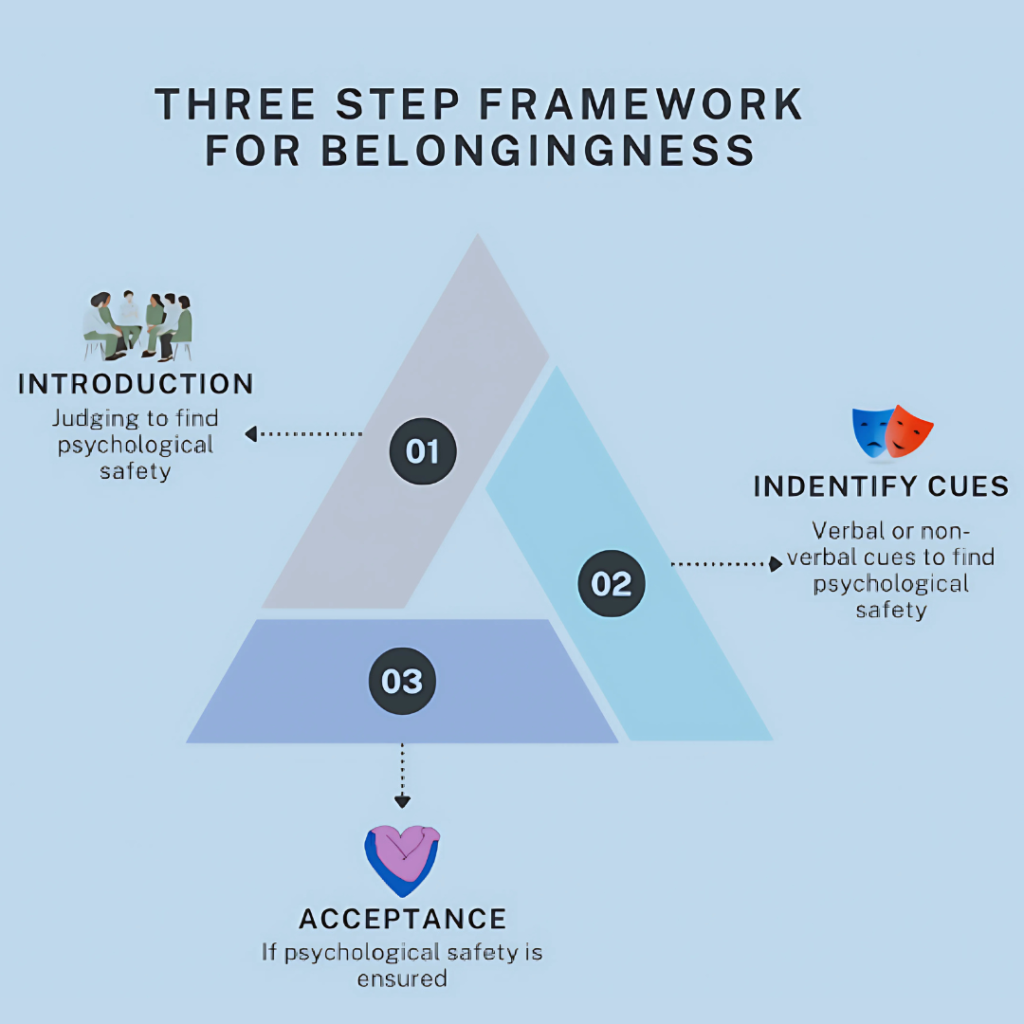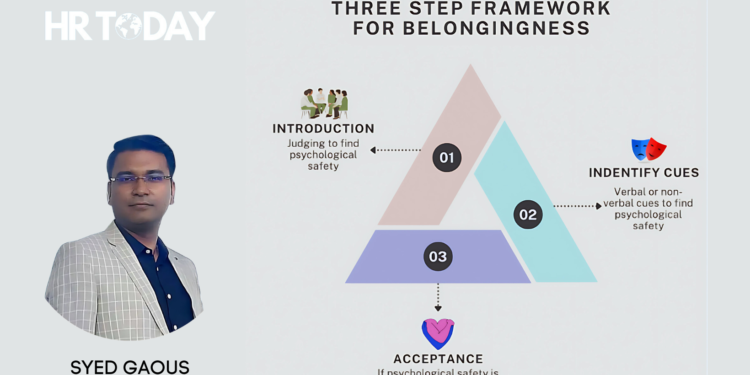
In any thriving workplace, one element remains foundational to success: Psychological Safety. When employees feel safe to express ideas, take risks, and be their authentic selves, engagement, innovation, and performance skyrocket. Yet, belongingness rooted in psychological safety, is often an overlooked pillar in organizational culture. How can leaders cultivate this environment?
What is psychological safety? It is the belief that you can speak up, share ideas, and be yourself without fear of being judged, ridiculed, or rejected.
Therefore, a humble attempt to prepare a framework for cultivating belongingness in the workplace.
Step 1: Introduction – Judging Psychological Safety
From the moment an employee steps into a room, they begin assessing their surroundings. Whether in an interview, a team meeting, or even an informal gathering, judgment starts with an introduction. In these initial moments, employees are searching for psychological safety. Does the environment seem welcoming? Are there visible signs of respect and inclusion?
As leaders, you must understand that every introduction is an opportunity to establish trust. Your tone, body language, and inclusivity can set the stage for a safe environment where individuals feel they belong. Fail to create this sense of safety, and you risk disengagement from the start.
Step 2: Identifying Cues – Verbal and Non-verbal Signals
Once the initial assessment is made, employees turn to subtle cues to confirm their feelings of safety. These can be verbal-like the language used in meetings-or non-verbal such as facial expressions and body posture. Are leaders actively listening? Do team members acknowledge different perspectives without judgment?
Research shows that psychological safety often hinges on these unspoken messages. Leaders must become adept at reading and offering the right cues. Fostering this second stage means training managers to pick up on the signals employees are sending, and to respond with openness, empathy, and a commitment to inclusivity.

Step 3: Acceptance – Sealing Psychological Safety
The final step in the framework is where the magic of belongingness truly solidifies. If an individual has judged the introduction to be safe and has received positive cues, they move toward acceptance. At this stage, employees aren’t just trying to survive or fit in-they feel they can thrive as their authentic selves. It is the tipping point where employees decide, “Yes, this is my place. I can grow here.” They feel psychologically safe enough to engage fully, offer new ideas, and take risks without fear of backlash or exclusion.
Acceptance is the ultimate goal. It’s here that employees fully integrate into the team, not just as participants, but as contributors who feel respected and valued. Leaders must ensure this psychological safety is reinforced continuously, not just in isolated moments.
Belongingness isn’t a one-time event. Belongingness doesn’t happen by accident-it’s intentional. Leaders play the most critical role in shaping environments where psychological safety and belongingness flourish. It’s not enough to mandate a “culture of inclusion” through corporate slogans. Real belongingness requires active participation, observation, and engagement from leadership.

Read Also : Imagination in a Disrupted Age: Navigating the Future with Curiosity and Empathy












